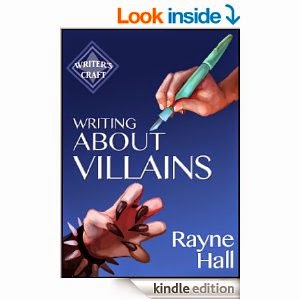 We spent last post discussing what qualities make a character unforgettable–the main character. But what about the story’s “baddie” or villain?
We spent last post discussing what qualities make a character unforgettable–the main character. But what about the story’s “baddie” or villain?
Writing Tip for Today: Every hero needs an anti-hero. Here are three ways you can make your story villain more fully formed.
Look for the Good.
Behind every good villain there are hurts, disappointments, fears and biases. Imagine not only the harm your villain wants to visit upon your heroine but also the villain’s hopes, dreams and vulnerabilities. Most villains aren’t pure evil–nor should they be written as such. In life, evil acts are usually committed by someone who is very hurt, angry or mentally ill. Yes, there are sociopaths and psychopaths, but most villains are better if they are made more human. Hannibal Lecter is often invoked as the baddest of them all, but he had a fondness for Clarice and a sense of humor, two attributes not seen in “completely” rotten people. Even Hitler had a mom.
Careful with the Self as Villain.
Many first novelists try to get by with the main character as his own worst enemy. It’s a good thing to give your character inner conflict, but if the major conflict isn’t balanced between inner and outer (tangible real in-the-world stuff, not feelings or resentments) the story will feel lopsided. Too much introspection will force your reader to go in search of action. So when you consider that inner conflict (she loathes her shyness), be sure to place that character in situations where she’ll have to deal with her fears.
Avoid Stereotypes.
You might think writers wouldn’t fall for black hats and mustache twirling, but I’ve seen these and other cliches used. One villain I wrote chewed on a toothpick. I ended up taking away that tag because it seemed too worn a device. Instead of the usual “baddie” things we associate from watching old oaters or mob movies, try giving your bad guy something unexpected and opposite: maybe your antagonist has a penchant for working with the poor; or chews gum because he’s trying to quit smoking. It’s our own blind spots where we often are inconsiderate or self-centered, and we often don’t even realize how we hurt or harm others. These are the types of qualities which will make your story seem very real and will engage readers. Just don’t forget: murderers can’t get away with their crimes!
A good resource is Rayne Hall’s Writing About Villains.





